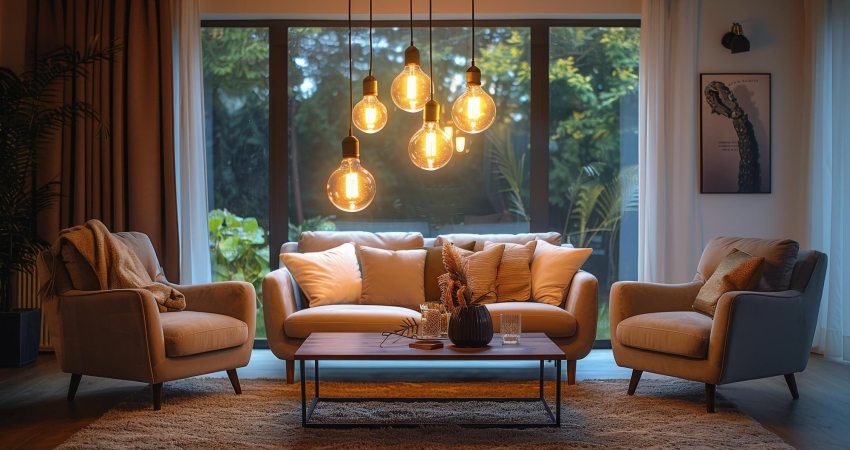When designing your home’s lighting, combining different types of fixtures can dramatically enhance both style and function. Two popular options that work wonderfully together are wall lights and pendant lights. Each serves a unique purpose, but when paired thoughtfully, they can transform any room into a well-lit, inviting space.
What Are Wall Lights?
Wall lights, also known as sconces, are mounted directly on walls and provide both ambient and accent lighting. They are incredibly versatile—used to highlight artwork, illuminate hallways, or add soft lighting to bedrooms and living rooms.
Benefits of Wall Lights:
- Space-Saving: Ideal for rooms where floor or table space is limited.
- Mood Setters: Perfect for creating warm, atmospheric lighting.
- Design Variety: Available in countless styles, from classic lanterns to sleek modern designs.
Wall lights are especially useful in narrow spaces like corridors or flanking mirrors in bathrooms and dressing areas.
The Appeal of Pendant Lights
Pendant lights hang from the ceiling and offer both focused task lighting and decorative appeal. From simple single pendants over a kitchen island to clusters above a dining table, they bring style and practicality to any room.
Why Choose Pendant Lights?
- Flexible Placement: Can be installed in a variety of rooms and adjusted in height.
- Statement Pieces: Often serve as focal points due to their striking designs.
- Task Lighting: Provide direct light for activities like cooking, reading, or working.
Combining Wall Lights and Pendant Lights for Maximum Impact
Using wall lights and pendant lights together allows you to layer lighting, balancing ambient, task, and accent needs in your space. Here’s how to combine them effectively:
- Balance the Space: Use wall lights to fill in darker corners or highlight features, while pendant lights illuminate main activity areas.
- Style Coordination: Choose fixtures that complement each other in finish and design to create a cohesive look.
- Layer Your Lighting: Pendant lights can provide general or task lighting, with wall lights adding soft accents or mood lighting.
Practical Examples of Pairing Wall Lights and Pendant Lights
- Living Room: Pendant lights over a reading nook paired with wall sconces along the walls create a cozy yet well-lit environment.
- Bathroom: A pendant light above the vanity combined with wall lights on either side of the mirror provides balanced, flattering light.
- Hallway: Pendant lights can illuminate the central path, while wall lights add warmth and highlight artwork or architectural details.
Final Thoughts
Wall lights and pendant lights each bring their own strengths to a room’s lighting design. Wall lights excel at creating ambiance and accenting spaces without taking up floor space, while pendant lights offer style, flexibility, and focused illumination.
By thoughtfully combining these fixtures, you can achieve a beautifully layered lighting scheme that enhances the.Wall lights and pendant lights each bring their own strengths to a room’s lighting design. Wall lights excel at creating ambiance and accenting spaces without taking up floor space, while pendant lights offer style, flexibility, and focused illumination.
By thoughtfully combining these fixtures, you can achieve a beautifully layered lighting scheme that enhances the functionality and aesthetics of your home.




























